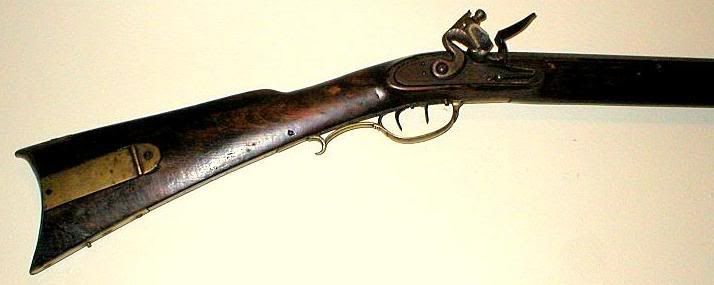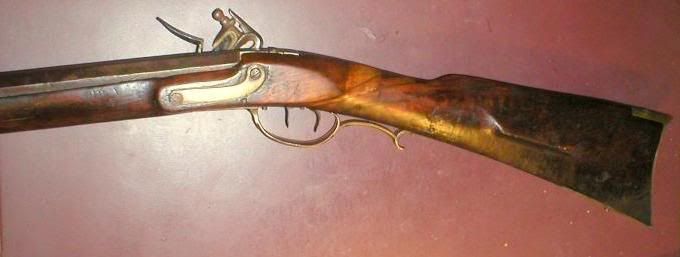



Okay ... heres the story from the current owner of this weapon ... I will let him tell it it his own words ...
"
Here's the flintlock LEMAN longrifle that friends found in a storage shed in Tehuacan, Mexico back in the 1960's. They bought the rifle from the Onyx craftsman who told him that it was with the family when they settled there in the late 1830's. They were shown documents belonging to the family dating from that time showing that the family acquired the land at that time.
The rifle reportedly came out of Texas "in the part that used to be Northern Mexico" The original ancestor who brought the rifle with his family had been an officer or a high ranking NCO in the Mexican army. Since this rifle cannot at this time be directly linked with any particular battle, it therefore cannot be labeled as coming from the Alamo or any specific battle. However, it almost certainly in my personal opinion did originate from the Texas War For Independence. Future communication with the family in Mexico might reveal additional information about the rifle. Anyway, I wanted to share this with you folks. Hope you like it. I'll take some pictures today that show the blade cuts along the top flat of the barrel
When I first received it in 1983, its about 40 caliber ... the stock was all bleached and dried out. The metal was all encrusted with rust that'd turned into a deep patina which hid the stamping of LEMAM-LANCASTER PA-WARRANTED on the top flat. The toe of the buttstock was seperated from the rest of the wood but thankfully, had been held in place by the toe plate and buttplate. The wrist was broken through and held in place with a large woodscrew and a copper wrap. I removed it and repaired the wrist. I had the missing wood on the forearm replaced, cleaned (not sanded!) the wood, and oiled it with linseed. Since the ramrod was missing I carved out another and added a jag tip. I figured that it deserved to be properly stablized and repaired for posterity.
It's integrity is still there as well as the full background concerning it's history which I'm typing up now to keep with it inside the patchbox. I even repaired the breech plug which was torn halfway through from one side to the tang screw hole when the wrist had been broken. These repairs have not compromised the original integrity of the historic relic.
F."
I am hoping you guys with all your expertise, can help furthur our quest for knowledge on this fine old weapon. :hatsoff:
Davy





